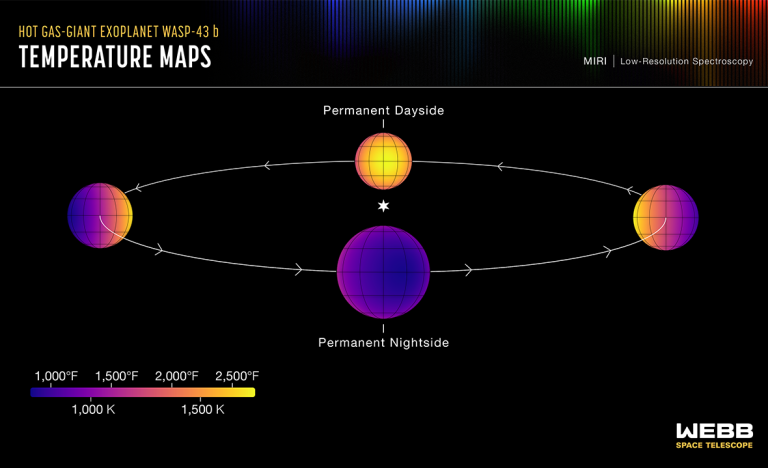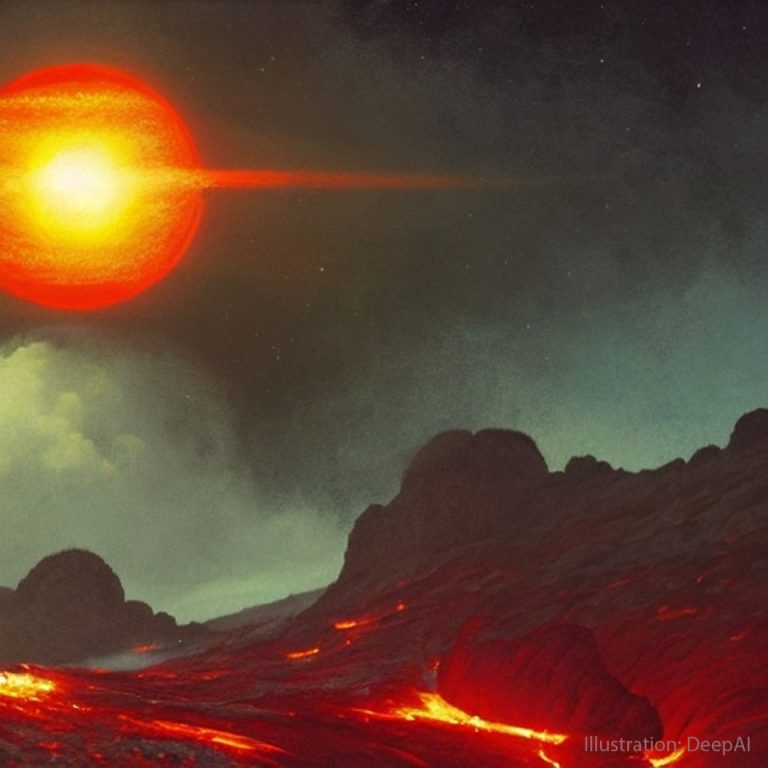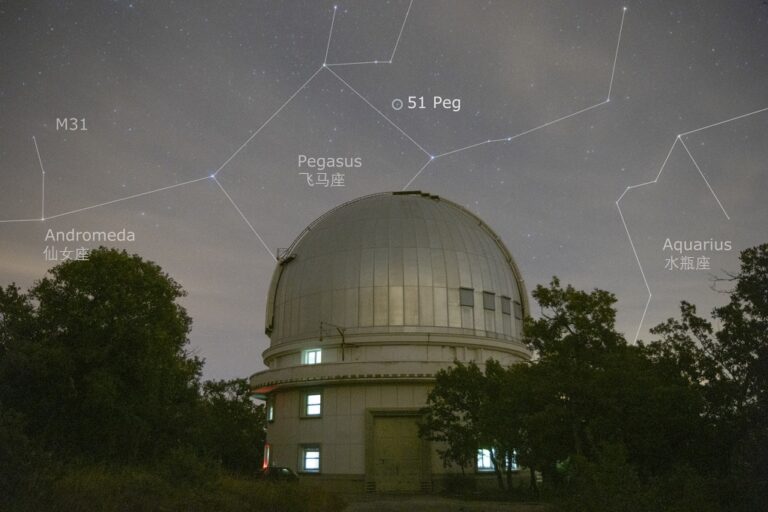系外行星WASP-43b的温度分布
请参阅说明。单击图片将下载可用的最高分辨率版本。

请参阅说明。单击图片将下载可用的最高分辨率版本。

2024年1月26日 Epsilon Tauri: Star with Planet Image Credit & Copyright: Reg Pratt Explanation: Epsilon Tauri lies 146 light-years away. A K-type red giant star, epsilon Tau is cooler than the Sun, but with about 13 times the solar radius it has nearly 100 times the solar luminosity. A member of the Hyades open star cluster the giant star is known by the proper name Ain, and along with brighter giant star Aldebaran, forms the eyes of Taurus the Bull. Surrounded by dusty, dark clouds in Taurus, epsilon Tau is also known to have a planet. Discovered by radial velocity measurements in 2006, Epsilon Tauri b is a gas giant planet larger than Jupiter with an orbital period of 1.6 years. And though the exoplanet can’t…

2023年9月20日 Methane Discovered on Distant Exoplanet Illustration Credit: Ahmad Jabakenji (ASU Lebanon, North Star Space Art); Data: NASA, ESA, CSA, JWST Explanation: Where else might life exist? One of humanity’s great outstanding questions, locating planets where extrasolar life might survive took a step forward in 2019 with the discovery of a significant amount of water vapor in the atmosphere of distant exoplanet K2-18b. The planet and its parent star, K2-18, lie about 124 light years away toward the constellation of the Lion (Leo). The exoplanet is significantly larger and more massive than our Earth, but orbits in the habitable zone of its home star. K2-18, although more red than our Sun, shines in K2-18b‘s sky with a brightness similar to the Sun in Earth’s sky….

2023年6月6日 Star Eats Planet Illustrative Video Credit: K. Miller & R. Hurt (Caltech, IPAC) Explanation: It’s the end of a world as we know it. Specifically, the Sun-like star ZTF SLRN-2020 was seen eating one of its own planets. Although many a planet eventually dies by spiraling into their central star, the 2020 event, involving a Jupiter-like planet, was the first time it was seen directly. The star ZTF SLRN-2020 lies about 12,000 light years from the Sun toward the constellation of the Eagle (Aquila). In the featured animated illustration of the incident, the gas planet’s atmosphere is first pictured being stripped away as it skims along the outskirts of the attracting star. Some of the planet’s gas is absorbed into the star’s atmosphere, while…

2023年5月11日 Fomalhaut’s Dusty Debris Disk Image Credit: NASA, ESA, CSA, Processing: András Gáspár (Univ. of Arizona), Alyssa Pagan (STScI), Science: A. Gáspár (Univ. of Arizona) et al. Explanation: Fomalhaut is a bright star, a 25 light-year voyage from planet Earth in the direction of the constellation Piscis Austrinus. Astronomers first noticed Fomalhaut’s excess infrared emission in the 1980s. Space and ground-based telescopes have since identified the infrared emission’s source as a disk of dusty debris surrounding the hot, young star related to the ongoing formation of a planetary system. But this sharp infrared image from the James Webb Space Telescope’s MIRI camera reveals details of Fomalhaut’s debris disk never before seen, including a large dust cloud in the outer ring that is possible evidence for…

2023年1月24日 LHS 475 b: Earth-Sized Exoplanet Illustration Credit: DeepAI’s Fantasy World Generator Explanation: If you could stand on exoplanet LHS 475 b, what might you see? No one knows for sure but pictured here is an interesting guess made by an Earth-based artificial intelligence (AI) engine. The existence of the exoplanet was indicated in data taken by the Earth-orbiting TESS satellite but confirmed and further investigated only this year by the near-Earth Sun-orbiting James Webb Space Telescope. What is known for sure is that LHS 475 b has a mass very similar to our Earth and closely orbits a small red star about 40 light years away. The featured AI-illustrated guess depicts a plausibly rugged Earth-like landscape replete with molten lava and with the central…

2021年10月9日 50 Light-years to 51 Pegasi Image Credit & Copyright: Josselin Desmars Explanation: It’s only 50 light-years to 51 Pegasi. That star’s position is indicated in this snapshot from August, taken on a hazy night with mostly brighter stars visible above the dome at Observatoire de Haute-Provence in France. Twenty-six years ago, in October of 1995, astronomers Michel Mayor and Didier Queloz announced a profound discovery made at the observatory. Using a precise spectrograph they had detected a planet orbiting 51 Peg, the first known exoplanet orbiting a sun-like star. Mayor and Queloz had used the spectrograph to measure changes in the star’s radial velocity, a regular wobble caused by the gravitational tug of the orbiting planet. Designated 51 Pegasi b, the planet was determined…